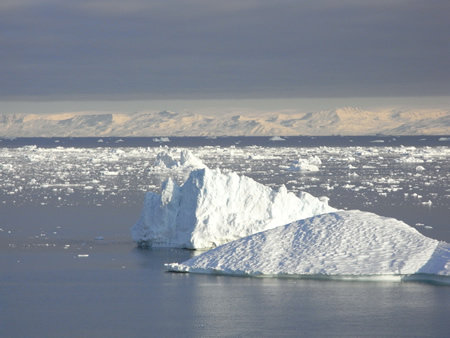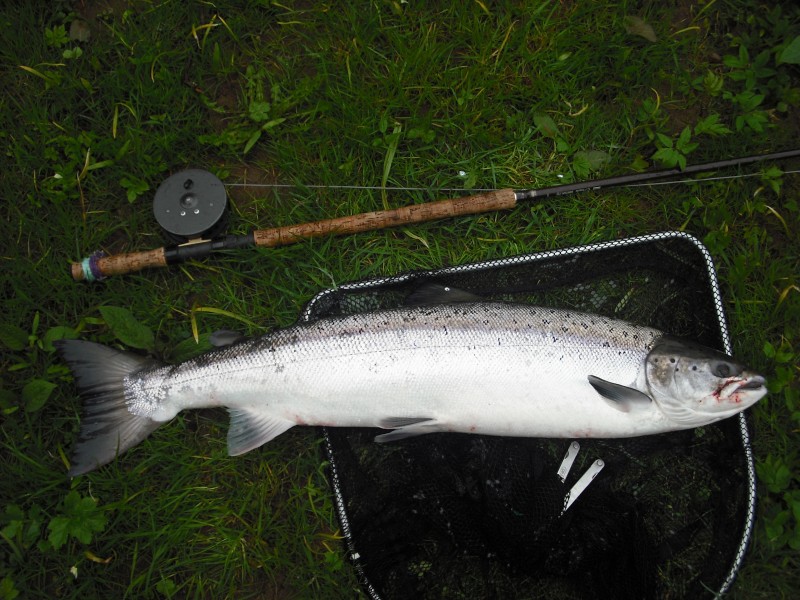These bulletin blogs represent news about Finavon and the South Esk, and my views as a riparian owner. They are not the views of any other organisation, nor are they designed to promote the interests of any individual or organisation other than Finavon Castle Water and factors affecting the fishery. Tony Andrews
It would be wrong to think of the South Esk radio tracking project as a failure, because some very interesting data have emerged from it, some of which are rather unexpected. At the end of year one of a three-year project there is much to build upon. So what has been going on in the South Esk and along the coast south of Scurdie Ness? Here’s a summary:
153 multi sea winter salmon netted and radio tagged at Usan, By Montrose, over 14 weeks between February and May 2012
The Greenland west coast & feeding areas of many of our multi sea-winter spring salmon.
Following tagging, some fish were later recorded by receivers on neighbouring rivers:
3 were recaptured at sea.
19 entered the North Esk, of which 6 returned to sea = 13
18 entered the South Esk, of which 8 returned to sea = 10
8 entered the Dee
6 entered the Tay
2 entered the Don
56 salmon recorded from a total of 153 tagged = 36%
36% of salmon recorded after tagging is a very satisfactory sample, although it is perhaps disappointing that such a small number of fish entered the South Esk.
A caveat: 2012 was not a typical year weatherwise for the South Esk; it is important that we take this into account when using data from the tracking project. In a wet year, as 2012 was, salmon behave differently in inshore areas than they do in a drought year. The threat of a mixed stocks fishery to smaller rivers, such as the Bervie, Lunan, or Fife Eden, is greatly increased in a dry summer. In drought years salmon arriving off the coast are liable to congregate in shoals in the larger estuaries, such as in the Tay estuary, or off Montrose, where freshwater flows are stronger, and concentrations of fish become vulnerable to exploitation by nets.
We have no knowledge of stock structures or abundance of most of the rivers affected by the Usan fishery, nor if any population is below sustainable levels (CLs). In effect this means that, while indiscriminate exploitation continues in this way, we cannot take action on any of these rivers to protect fragile stocks. For the three SAC rivers thus affected there is therefore little prospect of Scotland meeting the basic requirements of the EU’s Habitats Directive.
Usan nets also affect salmon stocks from unknown, distant rivers
The most recent news from Marine Scotland is that two Usan radio-tagged spring salmon have been recorded in the River Don, just north of Aberdeen. That confirms that fish netted at Usan in the early months of the year (16th February to 31st May) originate in a wide range of rivers, including the Dee, Tay, South Esk, North Esk and Don. Who knows how many other rivers are affected by the mixed stocks coastal nets at Usan?
If, as may be the case, the Usan nets are killing fish from further afield than the 5 identified rivers, it is of concern that stocks from rivers such as the Fife Eden, and even some of the smaller rivers in the Forth estuary, may suffer damage to fragile stock components from Usan nets in a drought year. However you look at it, the Usan Fishery poses a serious threat to the genetic diversity of east coast MSW salmon, especially in drought years.
Hard facts means no more doubt
It is now beyond dispute that the Usan coastal nets are a mixed stocks fishery par excellence, surely as indiscriminate and destructive as any drift net fishery. Their very existence ensures that it is impossible to manage the stocks of any of the affected rivers fully effectively. It should be noted that Scotland ended its own drift netting in the North Sea in 1962.
There is no conceivable logic, in the light of the data we now have, which show that the Usan nets are at least as damaging to wild salmon stocks as the Scottish drift nets were, why the Usan coastal nets should not be closed too.
It seems to me that the argument for restricting or ending the Usan Fishery is now overwhelming. Please see the next blog for a more detailed proposition.
TA 16 December 2012

